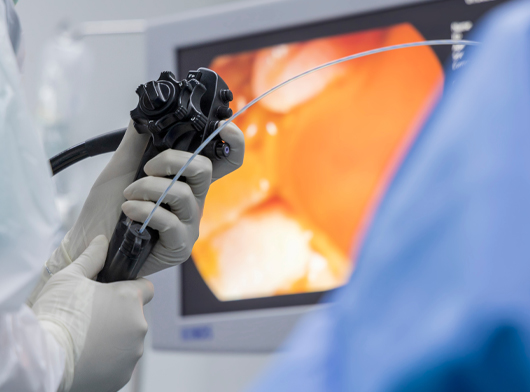-
- Indication: Doctors perform ERCP when the bile or pancreatic ducts have become narrowed or blocked because of
- Gallstones in the gallbladder
- Infection
- Acute pancreatitis
- Chronic pancreatitis
- Trauma or surgical complications in your bile or pancreatic ducts
- Pancreatic cysts
- Tumors or cancers of the pancreas
- Tumors of the bile ducts
- Procedures: Sedatives help you stay relaxed and comfortable during the procedure. A liquid anesthetic is sprayed on the back of the throat. This prevents gagging.
- Indication: Doctors perform ERCP when the bile or pancreatic ducts have become narrowed or blocked because of
Patient is asked to lie on the examination table. The endoscope is passed into the esophagus, stomach, and into the duodenum. A small camera mounted on the endoscope sends video images to a monitor. The endoscope pumps air into your stomach and duodenum, making them easier to see.
During ERCP, the doctor
-
-
- Locates the opening where the bile and pancreatic ducts empty into the duodenum
- Slides a thin, flexible tube called a catheter through the endoscope and into the ducts
- Injects a special dye, also called contrast medium, into the ducts through the catheter to make the ducts more visible on x-rays
- Uses a type of x-ray imaging, called fluoroscopy, to examine the ducts and look for narrowed areas or blockages
-
The doctor may pass tiny tools through the endoscope to
-
- Open blocked or narrowed ducts.
- Break up or remove stones.
- Perform a biopsy or remove tumors in the ducts.
- Insert stents



.png)

